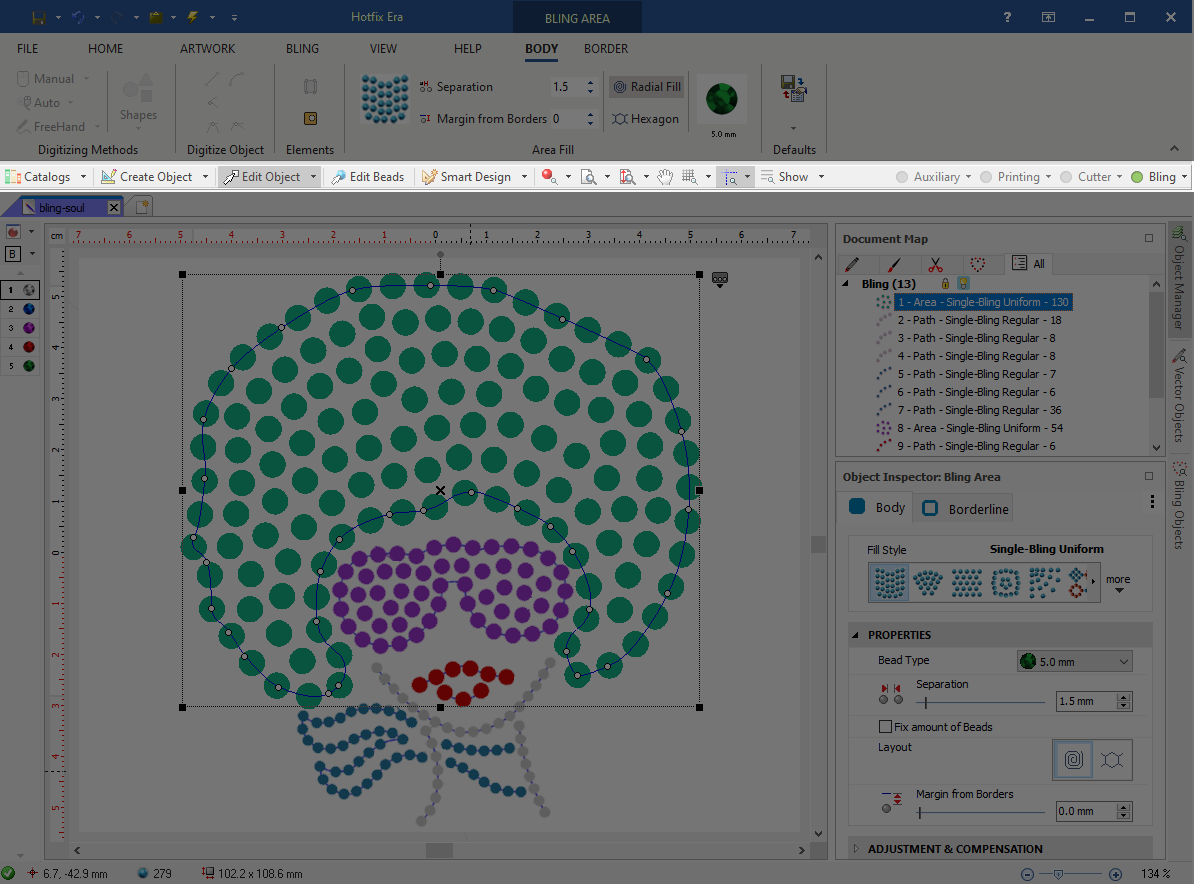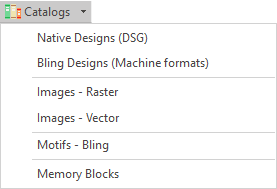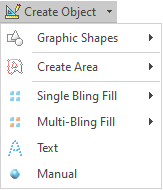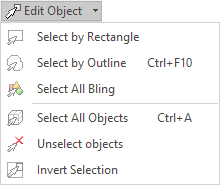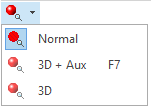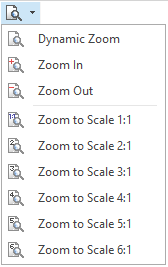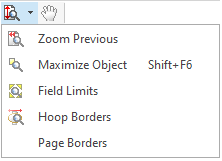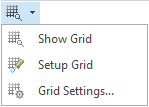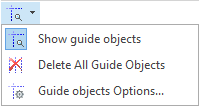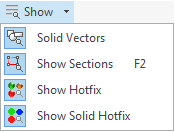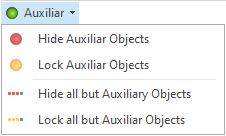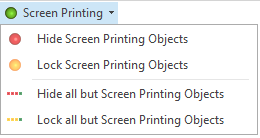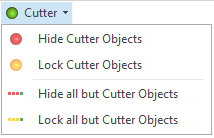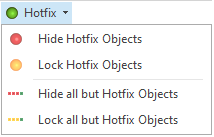This toolbar contains the most frequently used functions. It is located below the ToolsTabs. From left to right this toolbar is organized in 3 groups of functions: •Working Mode •View Options •Layers Visualization
|
|
This is the MAIN toolbar
|
Working Mode group
|
Working mode refers to the activity, which may include:
•CATALOGS |
|
Insert Designs, Memory Blocks, Motifs and Images to the current Design |
•CREATE OBJECT |
|
Activate the OBJECT CREATION MODE (Objects Creation) |
•EDIT OBJECT |
|
Activate the OBJECT EDITING MODE (Condensed Editing) |
•EDIT BEADS |
|
Activate the BLING BEADS EDITING MODE (Expanded Editing |
•SMART DESIGN |
|
Quick tool for Creation or Editing |
CATALOGS
|
This tool offers a catalog view of several resources for the creation of bling designs. Available tools depend on the software configuration. ➢Press on the arrow to unfold the list of tools |
CREATE OBJECT
|
This function gathers the tools available to create an embroidery design. Available tools depend on the software configuration. ➢Press on the arrow to unfold the list of tools.
|
EDIT OBJECT
|
This tool allows you to select an object or block of objects for objects editing. After selection, you can modify the geometry (expand, reduce, rotate, mirror, etc.) from the workspace and edit the fill properties from the context tooltabs or from the Object Inspector. You can select any object type of any decoration specialty, including raster images, vector objects or bling objects. ➢Press on the arrow to unfold the list of tools.
|
EDIT BEADS (Expanded Editing)
|
This tool activates the bling beads editing mode. It allows to edit individual beads: move, delete, insert, etc. |
SMART DESIGN (Create & Edit)
|
This working mode accelerates the activities related with the objects creation and edition, as well as some functions related with auto-digitizing (autocomplete). The Smart Design tool includes the different types of objects with their respective fill modes. |
View Options group
|
View Mode
|
It includes several graphic representation modes, such as: •Normal mode: All elements are drawn with lines of the same thickness •3D mode: Realistic 3D representation of the design •3D + Aux mode: Same as 3D mode, but it also shows the image used as reference for digitizing |
Zoom Functions
|
|
It includes most of the zoom modes, such as: •Dynamic Zoom •Zoom In •Zoom Out •Zooms to different Scales •etc. Details in Zoom Function |
Grids
|
The Grid command controls the visibility of a set of small, equally spaced marks on the workspace. These marks allows you to accurately place objects within your design. You can control many aspects of the grid, such as the distance, mark shape, color, etc. Use the Grid button to turn on/off grid visibility. Details in Grid Function |
Guidelines
|
We call Guidelines to a set of auxiliary vertical and/or horizontal lines you can set to help with objects alignment and placement. Details in Guidelines Function |
Show/Hide design references
|
We call references to the set of graphic elements that help you to understand the design on the Workspace. You can show/hide (turn on/off) these elements.
|
Layers Visualization group
|
What does each layer indicator mean?
Each layer indicator refers to a specific group of objects included in a design that belong to a particular decoration specialty:
•Auxiliar |
Auxiliary objects are raster images, vector images and vector elements (graphics) which are used as background or as references to create the designs objects over it, but they are not part of the final design. |
•Printing |
Printing objects are raster images, vector images and vector elements (graphics) that will be used for screen-printing or digital printing (they are part of the final design). |
•Cutter |
Cutting objects are vector elements (graphics) that will be used for cutting on vinyl and laser cutters (they are part of the final design). |
•Bling |
It includes all bling objects of any type. |
Show/Hide a decoration layer
By pressing the indicator you can show (or hide) the layer on the Workspace.
•Green indicator |
The objects of the selected decoration specialty are displayed in the workspace. |
•Red indicator |
The objects of the selected decoration specialty are not displayed in the workspace. |
More decoration layer functions
|
By pressing on the drop-down arrow to access the other available options: Hide... Hides all the objects of the selected layer (decoration specialty). Lock... This function blocks all the objects of the selected layer (Yellow indicator). The objects can be visible but the application won't allow you to select and edit any object of the selected decoration specialty. This feature is very useful when you are digitizing and do not want to move any object of this decoration type by mistake while you create or edit objects of other decoration specialties. Just press this function again to unlock these objects. Hide all but... This function makes exactly the opposite to the "Hide" function: it hides all the other layers (decoration specialties) keeping the selected layer as the only visible layer. Lock all but... This function makes exactly the opposite to the "Lock" function: it blocks all the other layers (decoration specialties) keeping the selected layer as the only unblocked layer.
Notes: •When the on-screen simulation (3D) is enables, the auxiliary objects will become hidden as they are not part of the final design. •The changes on the status of these indicators will be also reflected on the Document Map. Blocked objects will appear grayed out. Hidden objects will not appear on the respective tab. |
